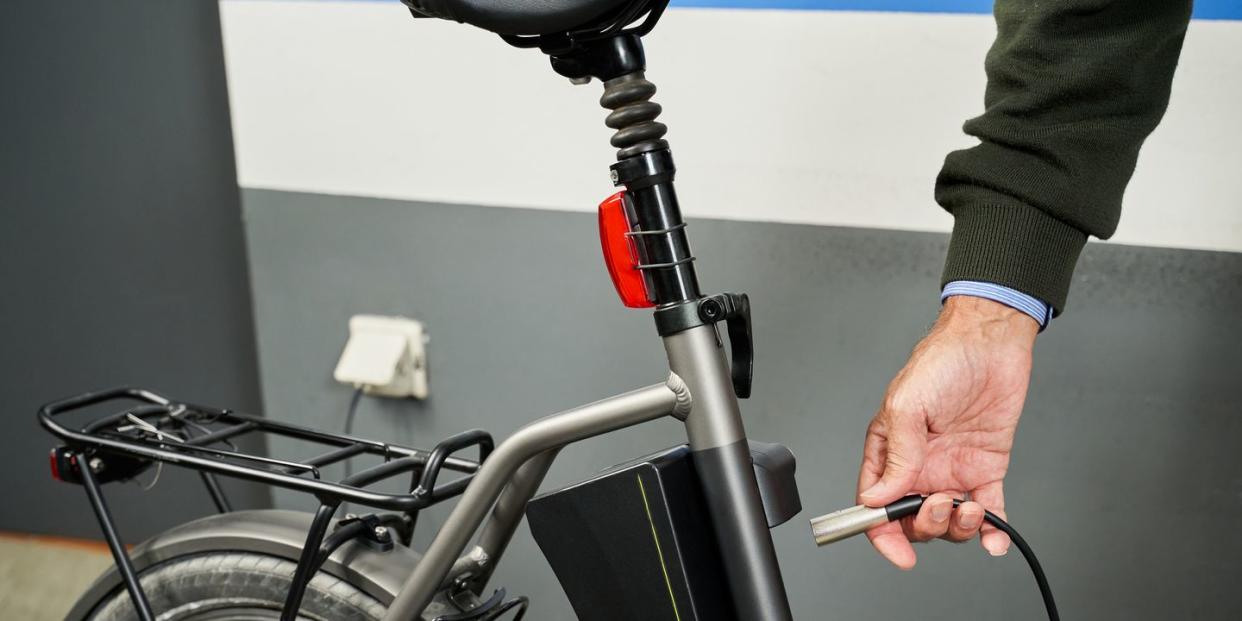Another week, another four fires in NYC caused by improper charging of lithium batteries, typically for scooters and e-bikes. NPR reports that fires caused by these batteries are on the rise: there have been 174 battery fires this year, more than double the numbers from 2021. Six people have died and 93 have been injured.
Part of this alarming trend can be attributed to the increase in e-bike and e-scooter usage, which has caused a higher volume of batteries being recharged more frequently. On top of that, as e-bikes and e-scooters become more popular, unregulated knockoff parts including batteries and chargers are flooding the market, sometimes with disastrous consequences. NPR noted that often, bike delivery workers are now using multiple e-bikes in a single day, swapping chargers and batteries between the bikes in an effort to keep up with work demands—all while making minimum wage, which makes it difficult to afford safer battery setups.
So, how are the batteries catching on fire? Lithium batteries are used in cell phones, laptops, tablets, and yes, e-bikes. While they’re generally safe for use, these batteries store large amounts of energy and can spark fires if not used correctly. And, as the FDNY points out, while most batteries will be safe, “like any product, a small number of these batteries are defective. They can overheat, catch fire, or explode.” Used batteries and batteries charged with the wrong adapter are more prone to overheating.
And that can cause devastating results:
Lithium-ion batteries store a large amount of energy and can pose a threat if not treated properly. Be #FDNYSmart when using any devices powered by lithium-ion batteries. See more tips at https://t.co/3ibx2fA9c4 pic.twitter.com/hyvb5jyN6C
— FDNY (@FDNY) November 1, 2022
“These bikes when they fail, they fail like a blowtorch,” Dan Flynn, the chief fire marshal at the New York Fire Department, told NPR. “We’ve seen incidents where people have described them as explosive — incidents where they actually have so much power, they’re actually blowing walls down in between rooms and apartments.”
FDNY also shares basic tips for e-bike and other lithium battery charging and storage at FDNYsmart.org. Included in those tips:
Purchase and use devices that are tested at a qualified testing laboratory—no battery knockoffs or used batteries, please! (This applies to the cord and power adapter as well as the battery.)
Follow instructions for charging and storage.
Do not charge a device near easily flammable objects, i.e. in bed or on a couch. Don’t leave them in hot spots in the house, i.e. in direct sunlight.
Don’t charge your e-bike in a way that blocks your exit to the building, especially in a small apartment.
Sounds obvious, but bears repeating: “If a battery overheats or you notice an odor, change in shape/color, leaking, or odd noises from a device discontinue use immediately.”
Dispose of batteries safely: They can’t go in regular trash or recycling, so check with your municipality for the proper way to dispose of them.
You Might Also Like
The Right Chain Lube Can Save You Thousands
Everything You Need to Start E-Bike Commuting
7 Things You Should Do After Every Rainy Ride
Source: Read Full Article
